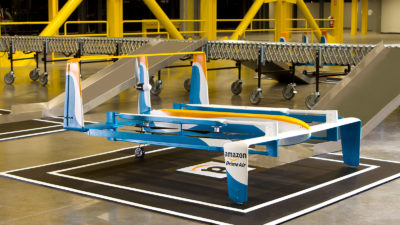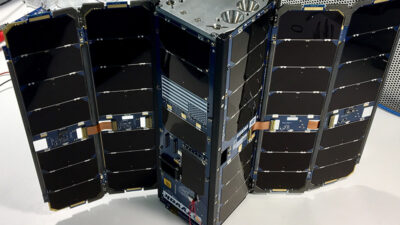Nuclear propulsion: bringing human presence to Mars
By Bryan Palaszewski|December 2022
The Nuclear and Future Flight Propulsion Technical Committee works to advance the implementation and design of nonchemical, high-energy propulsion systems other than electric thruster systems.
In January, an extensive national team of NASA, Aerojet Rocketdyne and many others completed new nuclear thermal propulsion, NTP, and nuclear electric propulsion Mars Transport Vehicle designs, in which hydrogen would be heated in a nuclear reactor and released out of a nozzle to create thrust. The mission architecture includes assembly and checkout of such a vehicle in a lunar distant high-Earth orbit. Components would be delivered by multiple NASA Space Launch System and SpaceX Starship rockets. Efficiency would be achieved by dropping off hydrogen tanks as they are emptied on the way to Mars, with the number of tanks tailored to the mission needs. After the checkout, this transport vehicle would depart for the planet, its crew orbiting Mars and then returning to Earth. Subsequent human transport vehicles and Mars cargo vehicles would deliver crew and cargo to the surface aboard landers. Several Mars landers, using chemical propulsion, would deliver science payloads and propellant factories to the surface. The crew would ascend to the orbiting Mars transport vehicle in one of the landers. Longer missions for 400 or more days on the surface are planned. This mission architecture allows for developing several major systems over a longer period of time, thereby aiming for reduced cost per year.
In a contrast to past mission studies, the cargo vehicles would deliver the Mars landers onto the proper trajectory and then return to Earth orbit. Previous studies called for the cargo vehicles and landers to arrive in Mars orbit, and then would the landers be released. Also, this NTP cargo vehicle would be used as a tug to recover the human NTP transport vehicle from its high Earth orbit.
The mission architectures used both opposition-class and conjunction class interplanetary trajectories. With this mission flexibility, many new missions may be planned to supply a large Mars base camp and enable more diverse Mars exploration. A hybrid nuclear electric-chemical propulsion showed impressive potential performance. The nuclear electric round trip times and those for the nuclear thermal were very similar. Each of the electric vehicles did require added time for a low-thrust spiral away from Earth. Chemical propulsion with liquid oxygen and methane allowed for a faster mission.
In August, at NASA’s Glenn Research Center in Ohio, new estimates were created about the amount of water ice available for mining on the moons of the outer planets. The ice shells on the moons of the gas giants Uranus and Neptune were estimated to be 25 to 130 kilometers deep. The water ice would refuel oxygen-hydrogen propelled landers and hydrogen-fueled nuclear electric orbital transfer vehicles, or OTVs. The OTVs would recover deuterium and helium 3 nuclear fusion fuels from aerospacecraft that would mine the atmospheres of the gas giant planets for these fuels. The aerospacecraft would use nuclear gas core propulsion.
In May, DARPA opened the call for proposals for the next phases of its nuclear thermal propulsion program, DRACO, short for Demonstration Rocket for Agile Cislunar Operations, the aim being an on-orbit demonstration of a nuclear thermal engine in fiscal 2026. Blue Origin of Texas, General Atomics Electromagnetic Systems of California and Lockheed Martin delivered their preliminary designs and other materials under Phase I of DRACO. The forthcoming Phase 2 and Phase 3 contracts would focus on continued designing and manufacturing of the engine.
Turning to NASA-led research, as of October all three competitors under the Nuclear Thermal Propulsion Reactor Concept program — BWX Technologies of Virginia, General Atomics EMS and Ultra Safe Nuclear Technologies of Washington — had submitted their conceptual reactor designs for review by the U.S. Department of Energy’s Idaho National Laboratory.
Contributor: Britton Reynolds



































